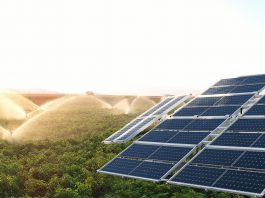As the world strives to become carbon neutral and align with countries’ low-carbon policies, more countries are looking to ditch fossil fuels and transfer to green energy sources.
However, a recent study indicates that moving the world’s energy system away from fossil fuels and building green energy resources will generate carbon emissions by itself. This is because the construction of renewable energy sources, such as wind turbines, solar panels, and other new infrastructure consumes energy, some of which comes from the fossil fuels we are trying to eradicate.
The study, published in the journal Proceedings of the National Academy of Sciences, suggests that to overcome this issue, green energy sources need to be constructed quickly. This will decrease the input of carbon emissions, because more renewable energy early on means fewer fossil fuels are needed to power the changeover.
Rebuilding the global energy system requires energy usage
“The message is that it is going to take energy to rebuild the global energy system, and we need to account for that,” said lead author Corey Lesk, who did the research as a student at the Columbia Climate School’s Lamont-Doherty Earth Observatory.
“Any way you do it, it’s not negligible. But the more you can initially bring on renewables, the more you can power the green energy transition with renewables.”
The researchers calculated the possible emissions produced by energy use in mining, manufacturing, transport, construction, and other activities needed to create massive farms of solar panels and wind turbines, along with more limited infrastructure for geothermal and other green energy sources.
Previous research has projected the cost of new energy infrastructure in dollars—$3.5tr a year every year until 2050 to reach net-zero emissions, according to one study, or up to about $14tr for the US alone in the same period, according to another. The new study appears to be the first to project the cost of greenhouse gases.
Current slow production of green energy sources could be harmful
On the current slow pace of renewable infrastructure production (predicted to lead to 2.7°C warming by the end of the century), the researchers estimate these activities will produce 185 billion tons of carbon dioxide by 2100.
This alone is equivalent to five or six years of current global emissions, which is a hefty added burden on the atmosphere. However, if the world builds green energy infrastructure fast enough to limit warming to two degrees—the current international agreement aims to come in under this—those emissions would be halved to 95 billion tons. Moreover, limiting warming to 1.5°C, the cost would be only 20 billion tonnes by 2100.
For this study, the researchers only considered carbon dioxide emissions, which make up around 60% of ongoing global warming. Other greenhouse gases, including methane and nitrous oxide, could have different effects.
Other effects of the switch to renewable energy
Other effects of the move to green energy are hard to quantify, but could be substantial. This new high-tech hardware will require not just massive amounts of base metals, including copper, iron, and nickel, but previously lesser-used rare elements such as lithium, cobalt, yttrium, and neodymium.
Many commodities would likely need to be sourced from previously untouched places with fragile environments, including the deep sea, African rainforests, and Greenland. Solar panels and wind turbines would directly consume large stretches of land, with attendant potential effects on ecosystems and people living there.
Lesk said: “We’re laying out the bottom bound. The upper bound could be much higher, but the result is encouraging.”
Given recent price drops for renewable technologies, 80-90% of the world’s green energy needs could be installed in the next few decades, especially if current subsidies for fossil-fuel production are diverted to renewables. “If we get on a more ambitious path, this whole problem goes away. It’s only bad news if we don’t start investing in the next five to ten years,” Lesk explained.
The researchers also looked at carbon emissions from adapting to sea-level rise and found that the construction of sea walls and moving cities inland, where necessary, would generate one billion tonnes of carbon dioxide by 2100.
Again, this would be only part of the cost of adaptation, as they did not look at infrastructure to control inland flooding, irrigation in areas that might become drier, adapting buildings to higher temperatures, or other needed projects.
“Despite these limitations, we conclude that the magnitude of CO2 emissions embedded in the broader climate transition are of geophysical and policy relevance. Transition emissions can be greatly reduced under faster-paced decarbonisation, lending new urgency to policy progress on rapid green energy deployment,” the authors concluded.








